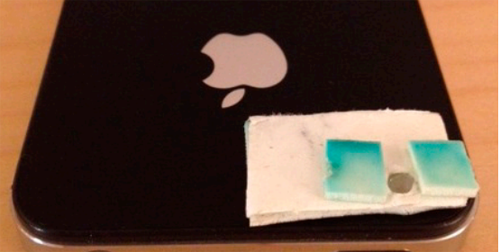A Canadian specialist in infectious diseases says he found some success in using a modified iPhone to diagnose worm infections in Tanzanian children. But Dr Isaac Bogoch says the results aren’t quite reliable enough yet.
The main way to diagnose worms is to examine stool samples for eggs. They are around 40 to 60 micrometers (around a twentieth of a millimeter) long, so too small to see with the naked eye. At the moment that usually means collecting samples, attaching them to slides and examining them in a laboratory with suitable microscopes, something that isn’t always convenient or economically viable in areas where the population is prone to infection.
Bogoch details the study in the latest edition of The American Journal of Tropical Hygeine and Medicine. He had read previous lab studies about adapting a cameraphone and decided a real world test might be more informative. He created a makeshift portable microscope by using double-sided tape to attach a 3mm ball lens to the camera phone lens.
He took this to Pemba Island, Tanzania where he and his team collected stool samples from children over a five day period. They attached the samples to slides, held them by the ball lens and lit them from below using an ordinary AA-battery flashlight. Not including the phone itself, the lens assembly cost around $15 and took under five minutes.
The researchers then used the image preview and digital zoom on the phone display as if they were looking into a microscope, a tactic Bogoch says produced the equivalent of 50x to 60x magnification. A random selection of the stool samples were then rushed to a senior microscopist within two hours for traditional microscope analysis.
Overall, the iPhone microscope was sufficient to pick up signs of infection in 69.4 percent of cases that were then diagnosed in traditional lab analysis. The iPhone technique results varied greatly among specific types of infection, ranging from 81 percent to 14.3 percent. Perhaps unsurprisingly given the potential limitations of the technique, the iPhone microscope was much better at picking up those infections that lead to a larger number of eggs in the stool.
Bogoch notes that the 69.4 percent success rate isn’t yet suitable for clinical use in the field, with 80 percent being a reasonable threshold to aim for. He also noted that another tactic might be to try a 1mm ball lens, which would mean a better resolution, but would mean only part of the sample could be examined at one time.

